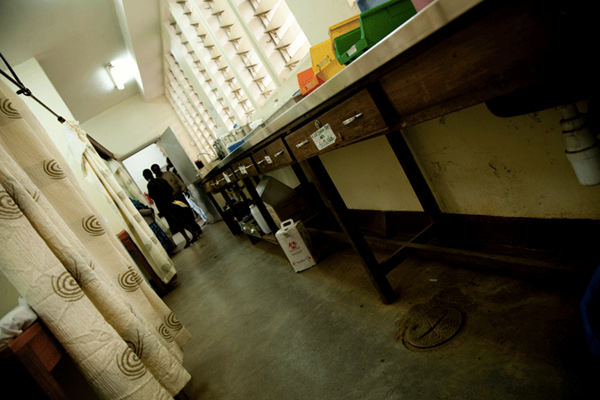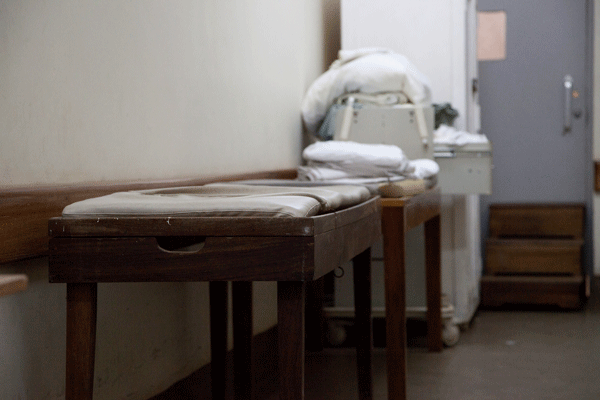Advice from experts on international emergency medicine to help you chart opportunities in projects and research — both abroad and domestic.
Mention international emergency medicine and you're bound to get questions about natural disasters, wars, and physicians dropping into villages with no running water, much less a CT scanner. The reality of working in international and developing world settings is usually less exciting, but is ripe with opportunities for quality improvement, academics, and research. If you're planning on a future focused on patients with the greatest need, read on! We've included advice from several experts on international emergency medicine to help you chart opportunities in projects and research — both abroad and domestic.
Many fellowships and residencies draw a distinction between the terms international and global health.
Discover your passion
Before signing up for a project, it's important to fit yourself into the alphabet soup of international EM work. Many residents and medical students have participated in short-term international work but are still looking for a more long-term commitment. First, start by identifying your possible niche within the recognized focus areas of the field: systems development, humanitarian relief and disaster management, public health/prevention, field (pre-hospital) medicine, program administration, or academics.1,2,3 It is worth mentioning that many fellowships and residencies draw a distinction between the terms international and global health. International EM refers to a focus on the development of EM residency training and humanitarian response, while global health refers more broadly to the transnational promotion of public health and clinical care.4
While many emergency physicians opt for short-term relief work, Catherine Lynch, MD, director of EM Global Health at Duke University, advises keeping an eye on research, which can help you contextualize your work, ensure your impact persists longer than your physical commitment, and fight clinical burnout. Quality research takes place across all facets of global health.
Find a mentor
A strong mentor will help you explore the diversity of global health service and research. There may be only one person working in your area of interest at your medical center. There may be none at all. Developing a general toolbox of skills early in your IEM career is more important than the specifics of your location or project, so don't fret. Makini Chisolm-Straker, MD, international EM fellow at New York Presbyterian Hospital, advises, “Join a project that you respect, and where you can be of service and be supervised and guided”¦otherwise it's not worth the stress.” When in doubt, don't be afraid to knock on more doors. Faculty from neighboring medical centers may be more receptive to outside projects than you think. Also, check out emra.org, which offers a service to connect EM residents and medical students with IEM fellows who can help you think through research and project options.
Find a partner location
Identifying a partner organization and site involves finding a place that is open to improvement, while recognizing that there will be limited infrastructure and research support.5 Joseph Novik, MD, who previously helped establish the first Rwandan emergency medicine training program and taught ultrasound in Rwanda through his work with Human Resources for Health (HRH), observes that connecting with a partner institution in an organic way relies upon trust-building: “When you first show up, try to observe without doing or saying much for a few weeks, even if you think actions could be done better. This will help you gain insight to practice patterns and build partnerships based on trust and mutual respect.”
Even when travel is not an option, you can still make an impact. The Global Emergency Medicine Literature Review identifies and publishes an annual review of top articles in emergency medicine and global health; its managing editor, Tom Becker, MD, is the past chair of the EMRA International Division. He encourages residents to apply to be article reviewers for the project (applications are due in September 2014). This is an excellent way to explore and become involved in global health and international medicine without having to leave the confines of your own home.
Identifying a partner organization and site involves finding a place that is open to improvement, while recognizing that there will be limited infrastructure and research support.
Table 1. ONLINE LINKS FOR INTERNATIONAL RESOURCES
EMRA International Division: www.emra.org/committees-divisions/international-division
ACEP International Section: www.acep.org/InternationalSection
International EM Fellowships Consortium: www.iemfellowships.com
SAEM Fellowships Database: www.saem.org/membership/services/fellowship-directory
Global Health Fellowships Database: www.globalhealthfellowships.org
Plan your future
When considering a career path in global health or international emergency medicine, there are many potential routes. Fellowships, nonprofit work, and governmental work are all on the table. Dr. Novik advises, “You don't have to do a fellowship in global health work. If you're looking to develop an academic niche for yourself, then you should do a fellowship, but it doesn't necessarily have to be a global health fellowship.” The need for experts in emergency ultrasound, disaster medicine, and EMS is not limited to the high-income world – practically any fellowship can be applied to global health, so pick the one you love.
Ideally, the community you serve will help you identify your ideal partner organization. As Dr. Chisolm-Straker observes, “The provision of, and participation in, health care is true service. We are doing noble work. Done well, it is very, very hard. It is important. It is humbling.”
References
- Bayram J, Rosborough S, Bartels S, Lis J, VanRooyen MJ, Kapur GB, Anderson PD. Core curricular elements for fellowship training in international emergency medicine. Ann Emerg Med 2010; 17(7): 748-757.
- Hogan DE, Burstein JL (eds). Disaster Medicine. 2nd ed. Philadelphia: Lippincott.
- Alagappan K, Schafermeyer R, Holliman CJ, Iserson K, Sheridan IA, Kapur GB, Thomas T, Smith J, Bayram J. International emergency medicine and the role for academic emergency medicine. Ann Emerg Med. 2007; 14(5): 451-456.
- Morton MJ, Vu, A. International emergency medicine and global health: Training and career paths for emergency medicine residents. Annals of Emerg Med 2011; 57:520-525.
- Badcock D, Kelly AM, Kerr D, Reade T. The Quality of Medical Record Review Studies in the International Emergency Medicine Literature, Ann Emerg Med. April 2005; 45(4): 444-447.




